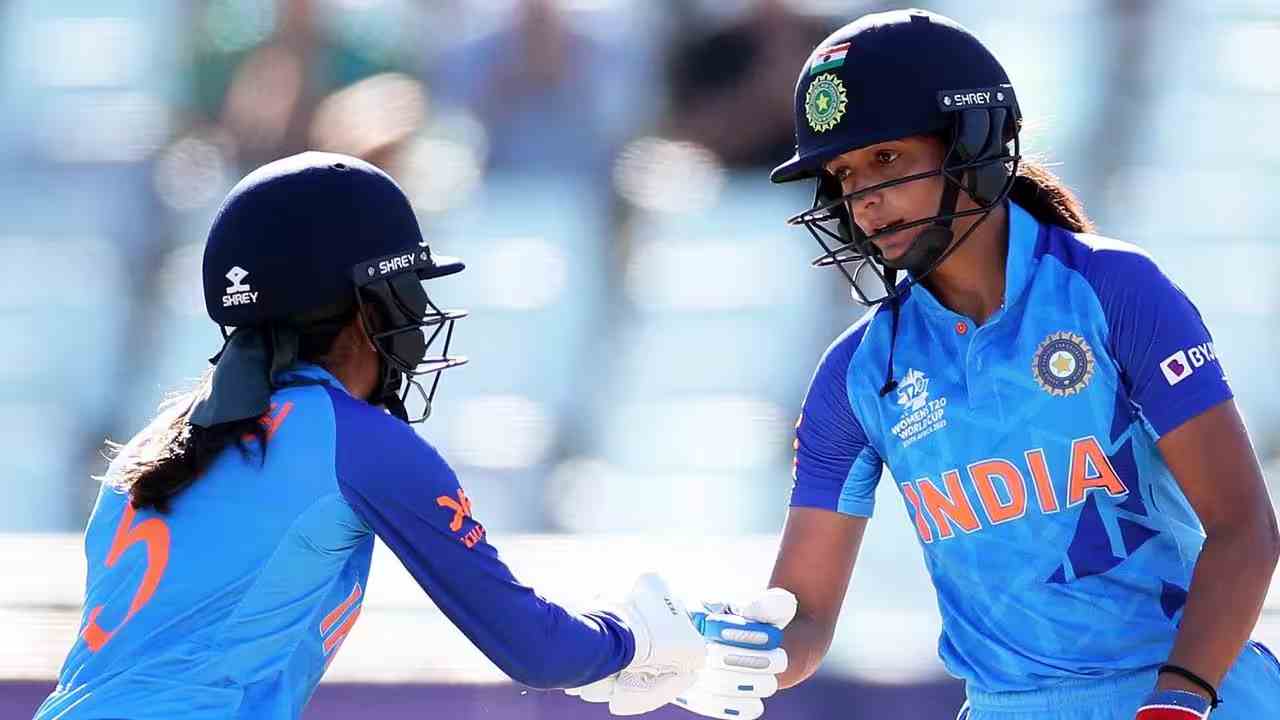Women’s World Cup 2025: A deep dive into India Women’s misfiring middle order and how it could impact matches against top-ranked opponents.

India Women’s campaign at the ICC Women’s World Cup 2025 has begun on the right note, with convincing wins over Sri Lanka and Pakistan. The points are on the board, the confidence is there, and the bowlers have looked sharp. However, behind those results lies a concern that could come back to haunt them if the middle order doesn’t perform as it should.
India’s middle order lacking fire
When we talk about India’s “misfiring middle order,” it’s not that the players have completely failed. It’s that they haven’t delivered the kind of impactful innings expected from names like Harmanpreet Kaur, Jemimah Rodrigues, Sneh Rana, Deepti Sharma, or Richa Ghosh. These are experienced players, capable of taking games away from any opposition, but so far, they have only shown flashes of form.
Across India’s first two matches, the middle-order batters from positions 4–7 have managed a total of 198 runs, averaging just under 25. The India captain scored 21 and 19, Jemimah made 0 and 32, Deepti contributed 53 and 25, while Sneh Rana added 28 and 20. While these contributions have been steady, they haven’t been match-defining. The numbers reflect India’s broader issue: the middle order is doing enough to hold the innings together, but not enough to push it forward when it matters most.
Read More: Women’s World Cup 2025, IND vs PAK: Despite indifferent batting, India win courtesy Kranti’s 3-20
Where do the runs dry up?
India’s top order, led by Smriti Mandhana and Pratika Rawal, has been setting up platforms at the start of the innings. But the flow of runs dips sharply once the openers are dismissed. The middle overs, which should be about building momentum and rotating strike, have instead become India’s quiet phase where the innings often loses its shape.
Although Australia has played fewer ODIs than India since January 2024, their middle order, mainly Beth Mooney, Ashleigh Gardner, Annabel Sutherland, and Tahlia McGrath, has been far more stable and effective. They have tried 7 players in these positions, while India has experimented with 12. Across 18 matches, Australia’s middle order has scored 1,990 runs, averaging 110.6 runs, consistently converting starts into big totals.
In contrast, India’s middle-order batters have scored 2,878 runs in 27 matches since 2024, averaging around 106.6 runs, but much of that comes from the main contributors Jemimah Rodrigues (840), Harmanpreet Kaur (782), Deepti Sharma (625), Richa Ghosh (350), and T Hasabnis (140) with the remaining batters adding only modest contributions. This highlights the lack of stability in India’s lineup compared to Australia’s settled, match-defining middle order.
In their only completed World Cup match so far, Australia’s middle-order batters combined for 158 runs, averaging nearly 40, consistently lifting the tempo after the 20th over and converting steady starts into 300-plus totals. India, on the other hand, have struggled to build partnerships and accelerate scoring in the middle overs. Deepti Sharma and Harleen Deol have played handy cameos, but they haven’t yet delivered the big, match-defining innings. Harmanpreet Kaur, the captain and heartbeat of the lineup, is also due for one of her trademark knocks. Until she finds that rhythm, India’s middle order will continue to lack the punch it needs to dominate the stronger sides.
Read More: Women’s World Cup 2025, IND vs SL: Lower order flourish saves India in tournament opener
What needs to change?
For India to challenge the top sides, their middle order has to find its spark and fast. The upcoming games against South Africa and Australia will be the real test. The batters need to show not just technique, but temperament, the ability to rebuild after early wickets, and the aggression to convert starts into match-winning scores.
It might also be time to rethink the batting order. Someone like Richa Ghosh, who has the range to clear the ropes, could be promoted higher to change the tempo. Deepti Sharma, who plays well under pressure, could anchor one end while others attack around her. The idea should be to play fearless cricket, not hesitant, waiting-for-the-opportunity cricket.
The road ahead
India’s tournament start has been promising, but the middle-order remains a concern. While manageable against weaker teams, this flaw could be costly against world-class opponents, as relying solely on the top order won’t ensure competitive totals or sustained momentum. The talent is there India have produced match-winning performances before, including Harmanpreet Kaur’s 171* against Australia in 2017 but the challenge now is for the middle order to rediscover consistency and fire. Without it, India risks not just lower scores, but their chances of going all the way in the World Cup.
Read More: Kranti Goud, the Madhya Pradesh Express who is now India’s lead pacer along with Renuka Thakur

